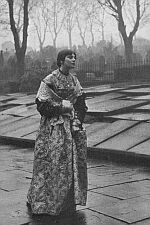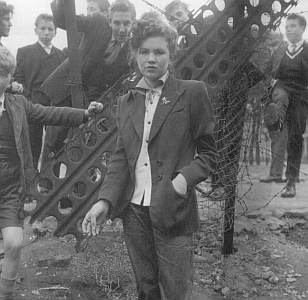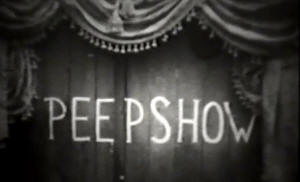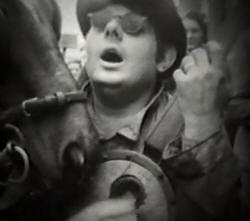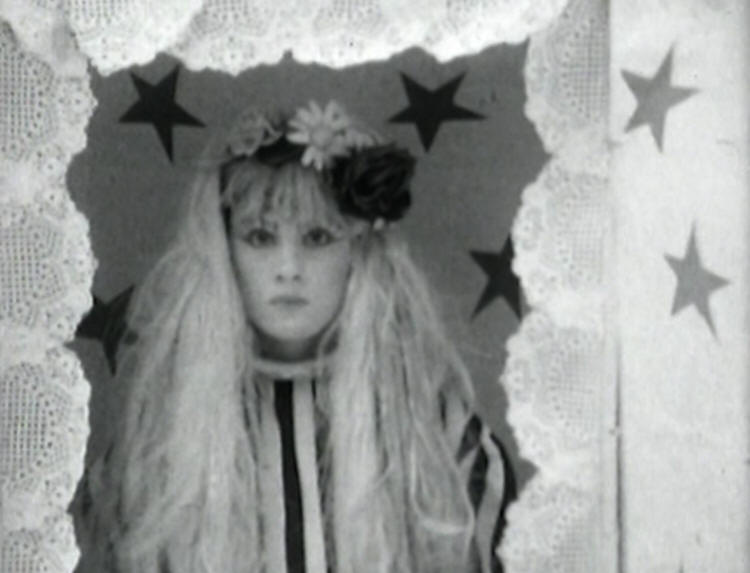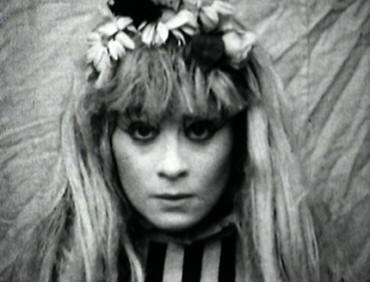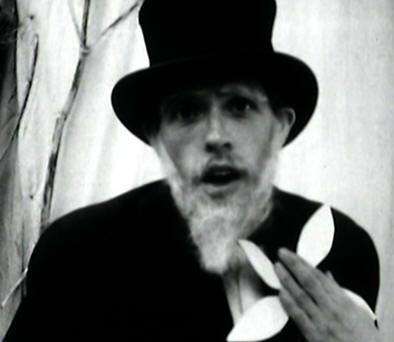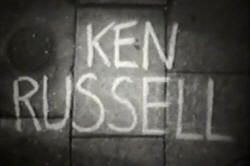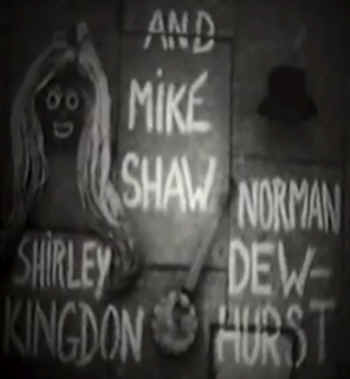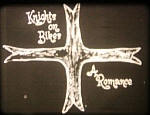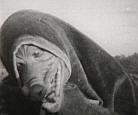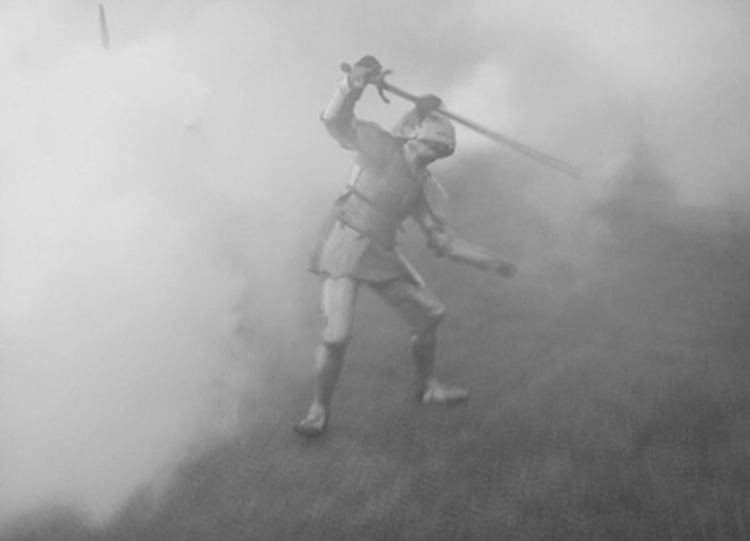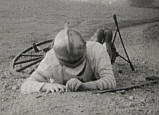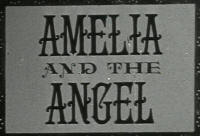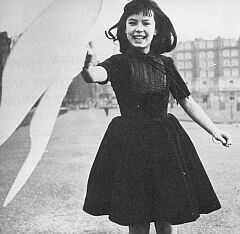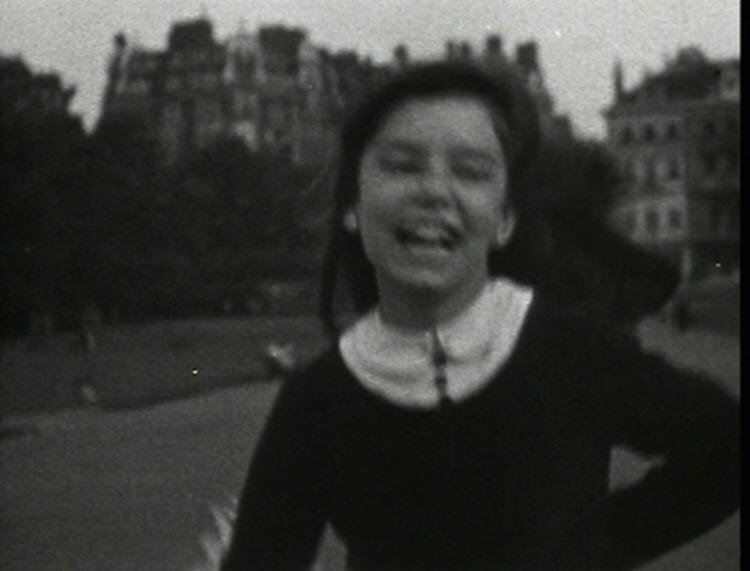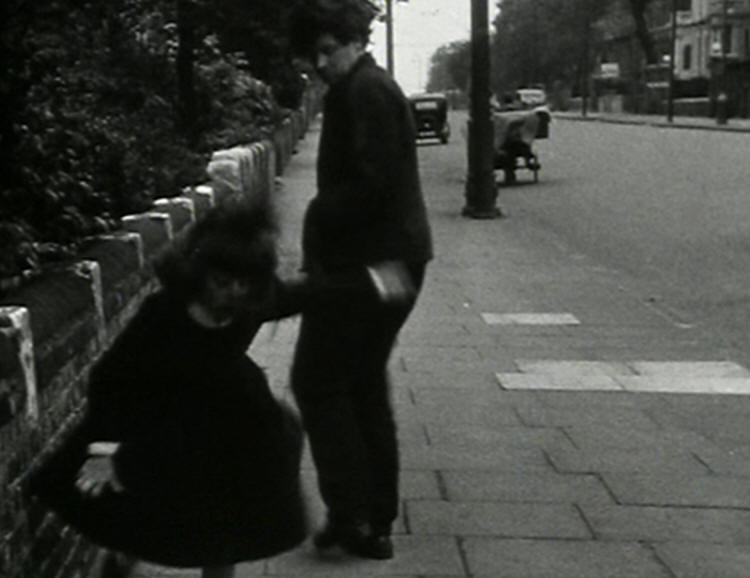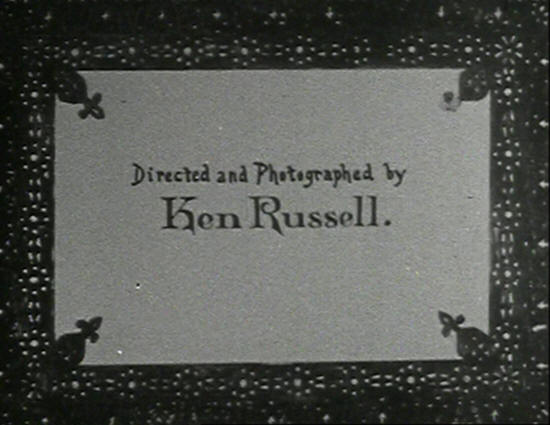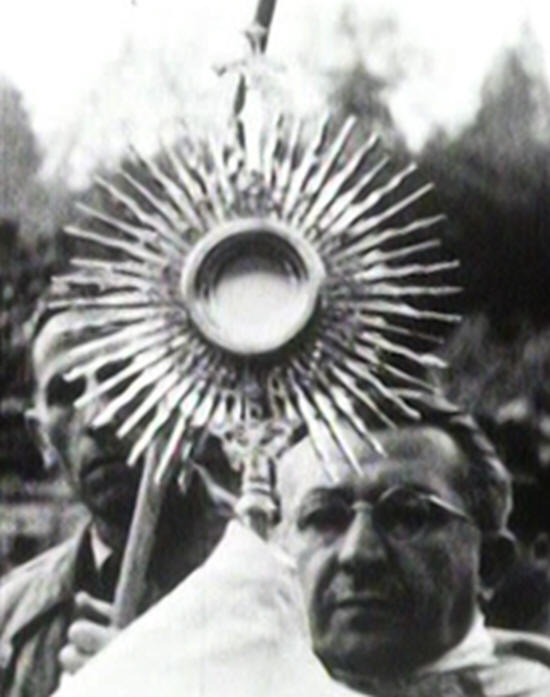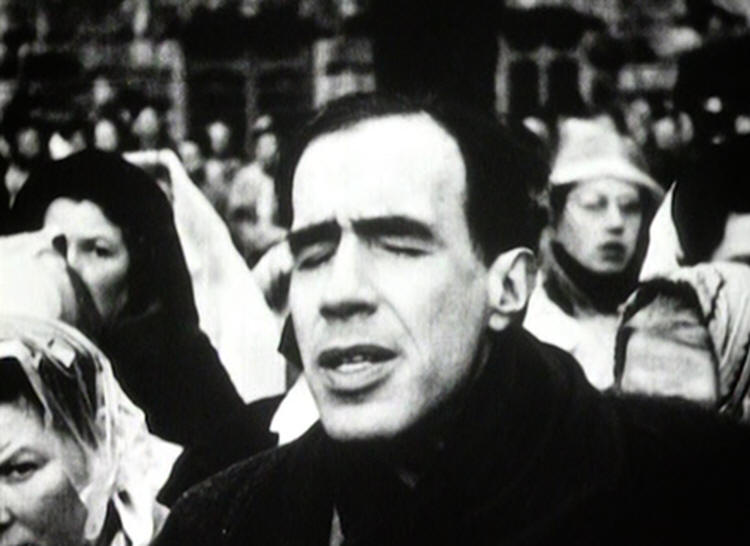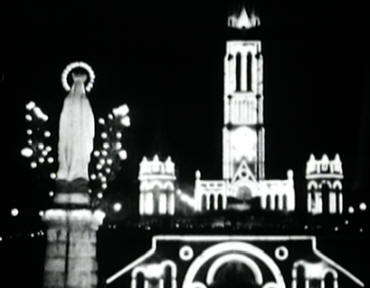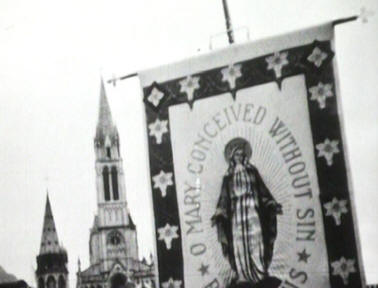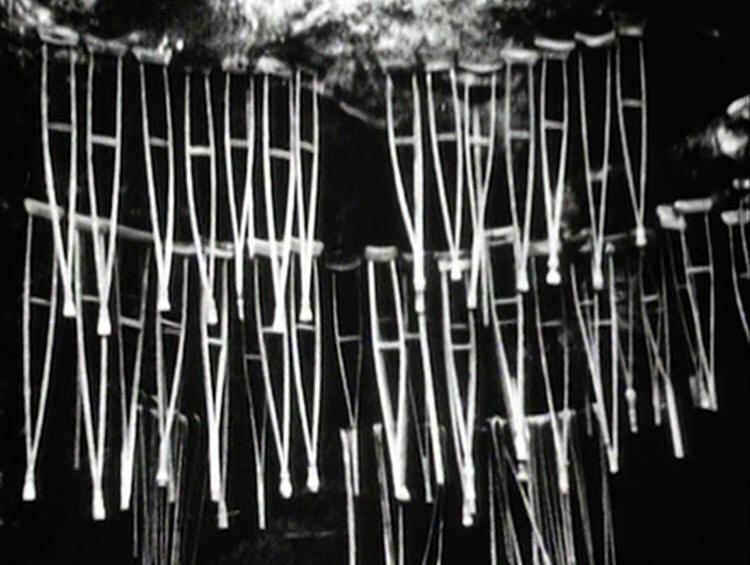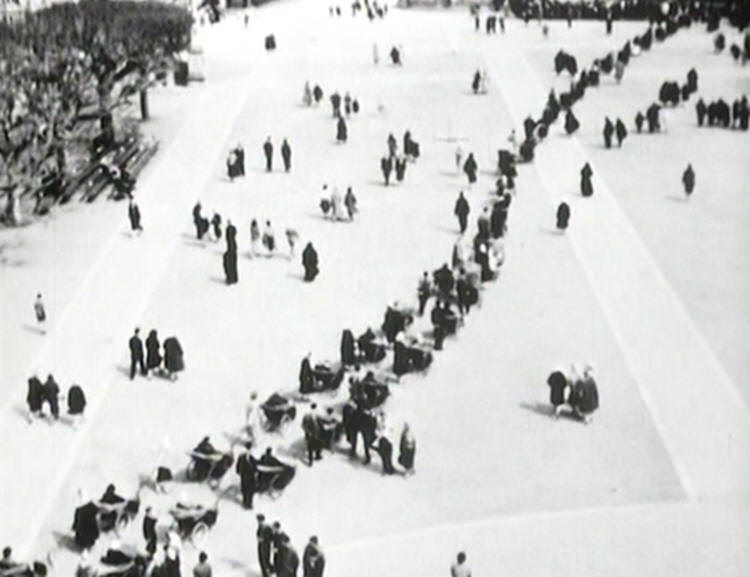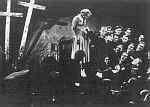|
"Every Spring I start a new amateur film and during the winter, while recovering from the experience, I indulge in the pleasant relaxation of dreaming up ideas for the next one. And once I get started these ideas come everywhere, from symphonies to newspaper clippings" (Ken Russell, Ideas for Films, FILM, Jan-Feb 1959) Russell was a struggling photographer and started to make picture stories- series of photo's that told a story. Often his wife Shirley starred and did the costumes. It wasn't long before he tried films with second hand equipment and produced amateur shorts. He submitted Amelia and the Angel to the BBC which led to his Monitor work. In this period he also converted to Catholicism which is evident in these works, and remains a theme in his films. The photographer Russell made picture stories, photo sequences that together told a story. It was his substitute for film making until he could afford a movie camera. They appeared in Picture Post and other magazines. The most famous image is of his wife Shirley playing the role of Charlotte Bronte. This was made at the BrontŽ Museum at Haworth on the Yorkshire moors during their honeymoon (from An Appalling Talent, John Baxter, 1973, chapter 2).
"Although these essays were often accompanied by written texts, the photographers aspired to a form of visual narrative that could be understood solely from the images." (John Wyver, The Filmic Fugue of Ken Russellís Pop Goes the Easel, Journal of British cinema and television, 2015, Vol.12 (4), p.438-451). Another director, Chris Marker, turned his picture stories into an art form on their own, his La Jetee being the basis for Terry Gilliam's Twelve Monkeys.
The Bogus Beggar's Academy trains beggars (a Ken Russell cameo in dark glasses to appear to be blind, practising limping with crutches etc). But their earnings fall when a peepshow is set up. Through the hole in the wall is a professor and a mechanical life-size doll, played by Ken's future wife Shirley Russell (then Shirley Kingdon).
The films is influenced by The Cabinet of Dr Caligari, and is also similar to the amateur films Roman Polanski was making round the same time (Two Men and a Wardrobe) but is well below the level of Polanski or of Russell's later Amelia and the Angel. The best parts are the photography from above of the crowd around the hole in the wall (compare with Hitchcock).
A nice touch is that the story (the film is silent so it is told in writing) is chalked to the pavement or painted on walls. And the opening credits with credits painted on umbrellas filmed from above, which are then removed to reveal the rest of the credits on the pavement, is imaginative. As well as Shirley Kingdon the film features Mike Shaw and Norman Dewhurst. The doll sequence would later be used in Gothic. All images from the film. Russell and other friends dressed as knights and riding bikes. Very disappointing and poorly filmed, for example the credit sequence goes in and out of focus. Only of historical interest.
It starts with a cross and a knight in armour (played by Russell) who eventually rides a bike to rescue a damsel in distress. She is abducted by a man in a wheelchair (a recurring image with Russell) and a person who under his robes turns out to be a wolf. And suddenly the film ends. It is probably unfinished, but who cares. A scene in Dante's Inferno of two knights fighting seems a reworking of parts of the film. All images from the film.
Another short film, this one costing £300. The British Film Institute also loaned £152.13.0. John Baxter states "Even as a footnote to his career, the film has remarkable interest, and I'm struck by the skill of the skill of a man who, on what is obviously a tiny budget, can achieve these sophisticated visual effects (from An Appalling Talent, John Baxter, 1973, chapters 1, 2). The film is a classic.
A girl is in a school play acting the role of an angel. She takes her wings home but they get broken. She has to find new angel's wings. The second-hand market doesn't help. She finds a magician's dog with wings but they are too small. This scene include dog-vision photography including the technically challenging jumping into the owner's arms. A girl (who acts really well) is drawing in chalk on the pavement. It is of an angel with wings and she says the angel is in the park. It is, but it turns out to be a statue. Amelia almost gives up hope, then sees a woman with precisely the wings she needs. She follows her into a house to see her posing in front of an artist. The artist, in a Jesus-like toga with sandals and a thick rope round his waist climbs stairs then comes down with just the wings she needs. This is a really good beginner's film. The photography by Russell is perfect: the cat close up, the headless body waltzing down the stairs, which turns out to be a tailors dummy, the girl as her emotions change, the artist's model strangely silent and passive. Some of the scenes with children dancing are similar to what Russell later did in Isadora Duncan. The women trying on the hat with her eyes hidden recalls the neighbour in Song of Summer. Russell went to the Catholic Film Institute looking for a subsidy, only to discover they did not make films but distributed them to schools. The head, Tony Evans, offered to help Russell make the film. So Ken, wife Shirley and Evans made the film in London. The Times of 16 April 1958 writes of the International Experimental Film Competition in Belgium, and the 12 British entries, one of which is Amelia. The girl, Mercedes Quadros, was the daughter of the Ambassador of Uruguay who Evans knew.
During the film Mercedes broke her arm, and the later shots hide the plaster cast- she runs with her hand behind her back. The film helped Russell's career. John Schlesinger was leaving the BBC Monitor series and Huw Wheldon was looking for a replacement "...because Schlesinger left us Wheldon had to hire another chap. So he hired Russell. I was talking to Huw one day and said what did you see of Russell's work, tell me what he's done. He told me that he had done one film about Lourdes on 16mm and he'd done another film... Amelia and the Angel" (interview of Monitor editor Allan Tryer by Stephen Peat, 14 March 1989, from the British Entertainment History Project- click here). The music includes:
Russell has a cameo role- the girl bumps into him and drops her money. "His more personal short films such as Amelia and the Angel (1957) showed a brilliant and precocious talent idiosyncratically able to channel the 'past' in prosaic images such as landscapes, abbeys, parks, alleys, and hum-drum middle class interiors rendering them alive with possibility" (George Porcari, CineAction, Issue 79, Winter 2010).
All images from the film.
A short documentary about modern day pilgrims to Lourdes. Russell brings out the commercialism of Lourdes.
Russell managed to get the
rights to use Benjamin's Brittan's ballet music for
£25. Russell says in
The scenes of rows of people in wheelchairs would come back in Tommy. The influence of Fritz Lang can be seen- Lang's shot from Metropolis below would fit easily into Lourdes.
|
